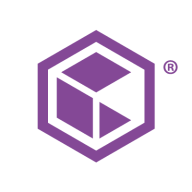

Commvault Cloud and Own Data Platform compete in data management solutions, each presenting unique offerings. Commvault Cloud has an advantage in pricing and support, while Own Data Platform is preferred for its advanced features.
Features: Commvault Cloud offers comprehensive data protection, backup, and recovery capabilities, scalable for various business sizes, and provides extensive data security measures. Own Data Platform includes advanced analytics and tailored data integration features, offering powerful data-driven tools and prioritizing customization for specific needs.
Ease of Deployment and Customer Service: Commvault Cloud supports simplified deployment models and responsive customer service for smooth transitions and ongoing assistance. Own Data Platform provides a modular deployment with flexible options but may require a learning curve. Commvault Cloud garners positive feedback for its ease, while Own Data Platform is praised for its tailored service.
Pricing and ROI: Commvault Cloud features a competitive pricing model that appeals to businesses looking for cost-effective solutions, ensuring significant ROI with efficient data management and reliability. Own Data Platform asks for a higher initial investment but promises high ROI through its powerful analytics and strategic insights. Budget-conscious businesses often choose Commvault Cloud, while those seeking advanced insights find Own Data Platform a worthwhile investment.

Commvault Cloud is the ultimate cyber resilience platform built to meet the demands of the hybrid
enterprise. Beyond its core functionality of data backup and recovery across diverse workloads, including applications, databases, virtual machines, and files, Commvault Cloud stands out as a robust defense against ransomware. Going beyond backup, the platform integrates advanced data security features such as encryption, access control, and threat detection, safeguarding against unauthorized access and cyber threats.
With tools for data management, classification, and migration, businesses can optimize storage costs, enhance accessibility, and comply with regulations seamlessly. Boasting cloud integration with major providers like AWS, Azure, and Google Cloud, Commvault Cloud leverages the scalability and flexibility of the cloud for comprehensive data protection and management. The platform's automation capabilities streamline tasks, and its reporting and analytics features provide valuable insights into data usage, potential risks, and optimization strategies. Commvault Cloud is not just a security tool; it is a key component of cyber resilience, enabling organizations to not only protect against cyberattacks but also recover swiftly and minimize the impact of incidents. Elevate your cyber resilience strategy with Commvault Cloud.
We monitor all Backup and Recovery reviews to prevent fraudulent reviews and keep review quality high. We do not post reviews by company employees or direct competitors. We validate each review for authenticity via cross-reference with LinkedIn, and personal follow-up with the reviewer when necessary.